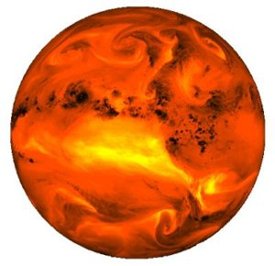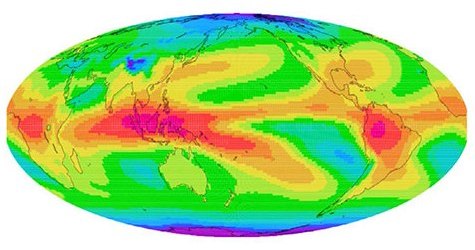
Miami – A new study from scientists at the University of Miami Rosenstiel School of Marine and Atmospheric Science and colleagues confirms rising levels of water vapour in the upper troposphere – a key amplifier of global warming – will intensify climate change impacts over the next decades.
The new study is the first to show that increased water vapour concentrations in the atmosphere are a direct result of human activities.
“The study is the first to confirm that human activities have increased water vapour in the upper troposphere,” said Brian Soden, Professor of Atmospheric Sciences at the UM Rosenstiel School and co-author of the study.
To investigate the potential causes of a 30-year moistening trend in the upper troposphere – a region 3-7 miles above Earth’s surface – Soden, UM Rosenstiel School researcher Eui-Seok Chung and colleagues measured water vapour in the upper troposphere collected by NOAA satellites and compared them to climate model predictions of water circulation between the ocean and atmosphere to determine whether observed changes in atmospheric water vapour could be explained by natural or man-made causes.
Using the set of climate model experiments, the researchers showed that rising water vapour in the upper troposphere cannot be explained by natural forces, such as volcanoes and changes in solar activity, but can be explained by increased greenhouse gases, such as CO2.
Greenhouse gases raise temperatures by trapping the Earth’s radiant heat inside the atmosphere. This warming also increases the accumulation of atmospheric water vapour, the most abundant greenhouse gas. The atmospheric moistening traps additional radiant heat and further increases temperatures.
Climate models predict that as the climate warms from the burning of fossil fuels, the concentrations of water vapour will also increase in response to that warming. This moistening of the atmosphere, in turn, absorbs more heat and further raises the Earth’s temperature.

The paper, titled “Upper Tropospheric Moistening in Response to Anthropogenic Warming”, was published in the July 28th, 2014 Early Addition on-line of the journal Proceedings of the National Academy of Sciences (PNAS).
The paper’s authors include Chung, Soden, B. J. Sohn of Seoul National University, and Lei Shi of NOAA’s National Climatic Data Center in Ashville, North Carolina.
Check the following link to read/download the Full Study:
http://www.pnas.org/content/early/2014/07/23/1409659111.abstract
Source: University of Miami.

















